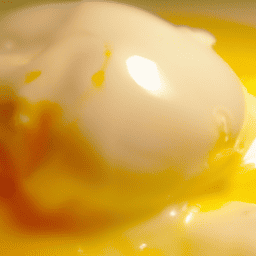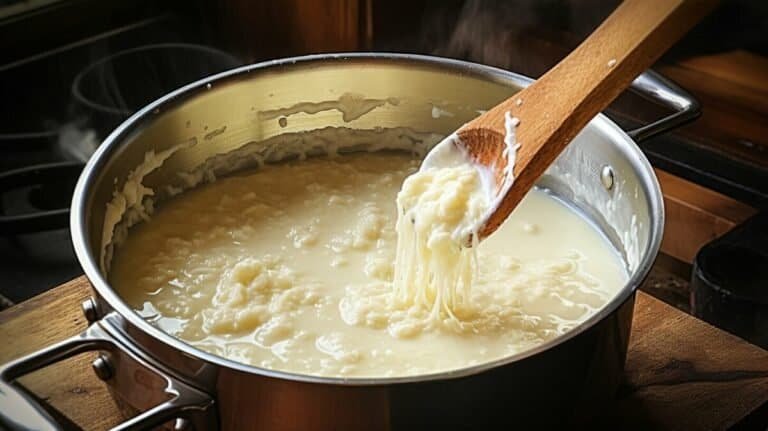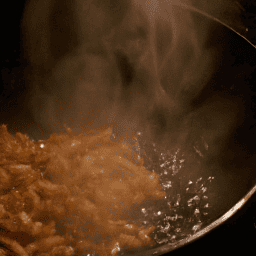How To Cook Eggs In The Microwave
Are you tired of the same old scrambled eggs for breakfast? Look no further! This article will provide you with a quick and easy way to cook eggs in the microwave. Whether you prefer a perfectly poached egg or a fluffy omelette, we’ve got you covered. Say goodbye to early morning stove struggles and hello to a delicious and hassle-free egg cooking experience. Learn how to cook eggs in the microwave and revolutionize your breakfast routine today!
Understanding the Basics
The basics of microwave cooking
Microwave cooking is a convenient and time-saving method of preparing a variety of dishes, including eggs. By utilizing electromagnetic waves to generate heat, microwaves cook food quickly and efficiently. When it comes to cooking eggs in the microwave, there are several techniques to choose from, including hard-boiled, scrambled, fried, poached, and omelettes. Each method has its advantages and considerations, which we will explore in more detail.
Pros and cons of using microwave for eggs
Using a microwave to cook eggs offers numerous benefits. Firstly, it is much faster compared to traditional stovetop methods, reducing cooking time significantly. This is especially useful on busy mornings when you’re in a rush. Additionally, cooking eggs in a microwave requires minimal skill, making it accessible to both experienced and novice cooks alike. However, there are also a few considerations to keep in mind. Microwaving eggs can result in uneven cooking and texture, and there is a risk of overcooking or undercooking them if not monitored correctly. Safety concerns regarding egg explosions also need to be addressed.
Concerns about safety and nutrition
While microwaving eggs can be a quick and convenient cooking method, it’s important to consider the safety and nutrition aspects. One concern is the risk of contamination, particularly from bacteria such as Salmonella. To ensure the safety of microwaved eggs, it’s essential to choose high-quality, fresh eggs and handle them with care. Additionally, there are some concerns about the nutritional value of microwaved eggs. While microwaving doesn’t significantly alter the nutrient content, overcooking can lead to nutrient loss. It’s important to cook eggs properly to retain their nutritional benefits.
Preparing to Cook
Choosing the right type of eggs
Selecting the right type of eggs is crucial for achieving the desired results in your microwave cooking. Fresh eggs are always recommended, as they not only taste better but also provide a better texture. When purchasing eggs, check the packaging date to ensure freshness. If possible, choose organic or free-range eggs for an added nutritional boost.
Understanding the microwave settings
Before starting to cook, it’s essential to familiarize yourself with the microwave settings. Different models may have various power levels, also known as wattage, ranging from 600 to 1200 watts. Higher wattage microwaves generally cook food faster, so adjust the cooking times accordingly. It’s advisable to start with shorter cooking times and gradually increase if needed, to prevent overcooking.
Gathering necessary cooking utensils
To successfully cook eggs in the microwave, you’ll need a few essential utensils. A microwave-safe bowl or mug is crucial for containing the eggs during the cooking process. Make sure it is labeled as microwave safe to avoid any accidents. Additionally, a microwave-safe cover or a microwave-safe plate to cover the bowl is necessary to prevent splatters and maintain moisture while cooking. A fork or whisk for stirring or beating the eggs, and oven mitts or a towel to handle the hot bowl, are also recommended.
Cooking Hard-Boiled Eggs
Safety concerns when boiling eggs in a microwave
cooking hard-boiled eggs in a microwave requires extra caution due to the risk of a potential explosion. The steam inside the eggs can build up and cause them to burst. To prevent this, it’s crucial to create a small opening in the eggshell before microwaving. This release valve allows steam to escape safely during the cooking process.
Step-by-step guide to cook hard-boiled eggs
- Start by placing the desired number of eggs in a microwave-safe bowl.
- Gently pierce the wide end of each egg with a pin or the tip of a knife to create a small hole.
- Fill the bowl with enough water to cover the eggs entirely.
- Cover the bowl with a microwave-safe plate or lid, leaving a small vent hole to allow steam to escape.
- Microwave the eggs on medium power for approximately 4 to 6 minutes, depending on the wattage of your microwave.
- Once the cooking time is complete, carefully remove the bowl from the microwave using oven mitts or a towel.
- Drain the hot water from the bowl and transfer the eggs to a bowl of ice water to cool and stop the cooking process.
- Let the eggs sit in the ice water for about 5 minutes before peeling and serving.
Tips for perfect hard-boiled eggs
To achieve the perfect hard-boiled eggs in the microwave, consider the following tips:
- Experiment with different cooking times to find the ideal duration for your microwave’s wattage.
- Adjust the amount of water based on the size of the eggs and your desired level of doneness.
- Use a bowl with a lid or cover to trap steam and improve cooking efficiency.
- Always handle hot eggs and water with caution, using oven mitts or a towel.
- Cool the eggs in ice water immediately after cooking to make peeling easier and prevent overcooking.
Cooking Scrambled Eggs
Ingredients needed
To make scrambled eggs in the microwave, you will need the following ingredients:
- 2 to 3 large eggs
- Salt and pepper for seasoning
- Optional ingredients such as cheese, vegetables, or herbs for added flavor
Steps to cook scrambled eggs in the microwave
- Crack the eggs into a microwave-safe bowl and whisk them with a fork until well beaten.
- Season the eggs with a pinch of salt and pepper, or any other desired seasonings.
- If you’re adding any optional ingredients, such as cheese or vegetables, mix them into the beaten eggs.
- Cover the bowl with a microwave-safe plate or lid, leaving a small vent hole for steam to escape.
- Microwave the eggs on medium power for approximately 1 minute.
- Carefully remove the bowl from the microwave and use a fork or a spoon to stir the partially cooked eggs.
- Return the bowl to the microwave and cook for an additional 30 seconds to 1 minute, or until the eggs are fully cooked and no longer runny.
- Remove the bowl from the microwave and let the eggs sit for a minute to set before serving.
How to achieve fluffy scrambled eggs
To ensure fluffy scrambled eggs in the microwave, try the following techniques:
- Whisk the eggs thoroughly to incorporate air and create a light texture.
- Avoid overcooking the eggs by checking the consistency after each cooking interval.
- Use a microwave-safe cover or lid to trap moisture and prevent the eggs from drying out.
- If desired, add a small amount of milk or cream to the beaten eggs for added fluffiness.
Cooking Fried Eggs
Preparation of ingredients
To cook fried eggs in the microwave, you will need the following ingredients:
- 1 large egg
- Cooking oil or non-stick cooking spray for greasing the bowl or plate
- Salt and pepper for seasoning
Steps to cook fried eggs in a microwave
- Grease a microwave-safe plate or bowl with cooking oil or non-stick cooking spray to prevent the egg from sticking.
- Crack the egg directly onto the greased plate or bowl, ensuring that the yolk remains intact.
- Gently pierce the egg yolk with a fork or toothpick to prevent it from bursting during cooking.
- Season the egg with a pinch of salt and pepper or any other desired seasonings.
- Place the plate or bowl in the microwave and cook the egg on medium power for approximately 45 seconds to 1 minute.
- Check the egg’s doneness by gently pressing on the yolk. The white should be fully set, and the yolk should still be slightly runny.
- If necessary, return the plate or bowl to the microwave and continue cooking in 10 to 15-second intervals until the desired level of doneness is achieved.
- Take caution when removing the plate or bowl from the microwave, as it may be hot.
Prevent eggs from exploding during cooking
To prevent fried eggs from exploding in the microwave, follow these tips:
- Puncturing the egg yolk before cooking allows steam to escape gradually, reducing the risk of explosion.
- Cook the egg on medium power to prevent rapid steam buildup.
- Keep a close eye on the egg while microwaving to ensure it doesn’t overcook and explode.
Making Microwave Poached Eggs
Preparing the egg and water mixture
To make microwave poached eggs, you will need the following ingredients:
- 1 large egg
- Water
- Vinegar (optional)
- Salt and pepper for seasoning
Safe microwave techniques
When poaching eggs in the microwave, it’s crucial to follow these safe techniques:
- Fill a microwave-safe bowl or mug with 1/2 to 3/4 cup of water, depending on your desired level of egg submersion.
- If desired, add a teaspoon of vinegar to the water to help the egg whites coagulate.
- Gently crack an egg into a separate small microwave-safe bowl or mug.
- Carefully transfer the egg from the smaller bowl into the water-filled bowl or mug.
- Using a microwave-safe cover, partially cover the bowl or mug, leaving a small vent hole for steam to escape.
- Microwave the egg mixture on medium power for approximately 1 minute.
- Check the egg’s doneness by gently touching the white; it should be set, while the yolk should be slightly runny.
- If necessary, continue to microwave the egg in 10 to 15-second intervals until the desired level of doneness is achieved.
Knowing when the egg is done
Determining whether a poached egg is done in the microwave requires some observation and practice. The cooking time may vary depending on your microwave’s power. The white should be fully cooked and no longer translucent, while the yolk should still have a slight jiggle to it. The key is to find the perfect balance between a cooked white and a runny yolk, according to your personal preference.
Creating an Egg Omelette
Gathering ingredients for omelette
To make a microwave egg omelette, gather the following ingredients:
- 2 to 3 large eggs
- Salt and pepper for seasoning
- Optional ingredients such as cheese, vegetables, or cooked meats for filling
Accurate microwave setting for omelette
Since an omelette requires gentle cooking, it’s best to use low to medium power for microwaving. Lower power levels allow the eggs to cook more evenly without becoming rubbery.
Easy steps to create a fluffy omelette
Follow these simple steps to create a fluffy omelette in the microwave:
- Crack the eggs into a microwave-safe bowl and whisk them until well combined.
- Season the eggs with a pinch of salt and pepper or any other desired seasonings.
- If desired, add any optional ingredients like cheese, vegetables, or cooked meats to the beaten eggs.
- Microwave the eggs on low to medium power for approximately 2 minutes.
- After the initial cooking time, carefully remove the bowl from the microwave and stir the partially cooked eggs gently.
- Return the bowl to the microwave and continue cooking for another 1 to 2 minutes, or until the eggs are fully cooked and set.
- Once cooked, slide a spatula or a fork around the edges of the bowl to release the omelette.
- Carefully transfer the cooked omelette onto a plate and fold it in half or roll it up before serving.
Cleaning After Cooking
How to clean the microwave after egg explosion
If an egg does happen to explode in the microwave, cleaning it up is essential for maintaining cleanliness and preventing any unpleasant odors. To clean the microwave after an egg explosion, follow these steps:
- Carefully remove any large egg remnants or splatters from the microwave using a microwave-safe sponge or cloth.
- Fill a microwave-safe bowl with a mixture of one cup of water and one tablespoon of white vinegar or lemon juice.
- Place the bowl in the microwave and heat on high power for 2 to 3 minutes until the inside of the microwave becomes steamy.
- Let the bowl sit in the microwave for a few minutes to allow the steam to loosen any dried-on residue.
- Carefully remove the bowl from the microwave and use a microwave-safe sponge or cloth to wipe away the loosened residue.
- For stubborn stains or odors, create a paste of baking soda and water and apply it to the affected areas. Allow it to sit for a few minutes before scrubbing gently with a sponge or cloth.
- Rinse the sponge or cloth thoroughly and wipe down the interior of the microwave to remove any remaining residue or cleaning solution.
- Dry the microwave thoroughly with a clean cloth or allow it to air dry before using it again.
Cleaning cooking utensils
After cooking eggs in the microwave, cleaning the cooking utensils is an important step to maintain their quality and prevent cross-contamination. The microwave-safe bowl, plate, fork, or whisk used to prepare the eggs should be washed with warm water and mild dish soap. Use a non-abrasive sponge or cloth to remove any stuck-on residue. To ensure cleanliness, consider running the utensils through the dishwasher or sterilize them in boiling water.
Maintaining cleanliness for future use
To maintain cleanliness for future microwave egg cooking, always be mindful of cleaning up any spills or splatters immediately after they occur. Regularly check the interior of the microwave for any residue and wipe it down with a damp cloth if necessary. By practicing good cleanliness habits, you can ensure the longevity of your microwave and the quality of your meals.
Common mistakes when cooking eggs in a microwave
Cooking eggs on high heat
One common mistake when cooking eggs in the microwave is using a high power setting. While high heat may cook the eggs faster, it can also result in uneven cooking and a rubbery texture. It’s important to cook eggs on medium or low power to allow the heat to distribute evenly and prevent overcooking.
Incorrect use of microwave-safe bowls
Using the wrong type of microwave-safe bowl can lead to safety hazards or compromised cooking results. Always select a bowl specifically labeled as microwave-safe to ensure it can withstand the heat generated during cooking. Using non-approved materials, such as metal or plastic containers not intended for microwave use, can cause damage to the microwave and even pose a fire hazard.
Overcooking the eggs
Overcooking eggs in the microwave is a common mistake that can result in dry and rubbery textures. Unlike stovetop cooking, the microwave cooks food much faster, so it’s crucial to monitor the eggs closely to prevent overcooking. Start with shorter cooking times and gradually increase as needed until the desired doneness is achieved.
Egg Recipes Using the Microwave
Advantages of using microwave for egg recipes
Using the microwave for egg recipes offers several advantages. Firstly, it saves time, allowing you to have a quick and easy meal. The microwave’s efficiency ensures that eggs cook faster than traditional stovetop methods, making it ideal for those busy mornings. Additionally, the microwave allows for easy cleanup since there are fewer pots and pans to wash.
Easy microwave egg recipes
- Microwave Egg Muffin: In a microwave-safe bowl or mug, crack an egg, whisk it, and season with salt and pepper. Add chopped vegetables and any desired seasonings, such as herbs or cheese. Microwave on high power for around 1 minute, or until the egg is fully cooked. Toast an English muffin, and then place the microwaved egg on top for a quick and delicious breakfast sandwich.
- Microwave Egg Fried Rice: In a microwave-safe bowl, add cooked rice, scrambled eggs, vegetables, and soy sauce. Microwave on high power for 1-2 minutes, stirring halfway through. Top with green onions, sesame oil, and additional soy sauce to taste.
- Microwave Egg Mug Scramble: In a microwave-safe mug, crack two eggs, whisk them, and season with salt and pepper. Add any desired toppings such as precooked bacon, shredded cheese, or diced vegetables. Microwave on high power for 1-2 minutes, stirring halfway through until the eggs are fully cooked. Serve with toast for a quick and satisfying meal.
Experimenting with different egg dishes
The microwave opens up a world of possibilities for experimenting with various egg dishes. From egg casseroles to egg drop soup, many traditional recipes can be adapted for the microwave. With some creativity and confidence, you can explore unique combinations of flavors, textures, and techniques to create your own microwave egg dishes. Don’t be afraid to try new things and embrace the convenience and versatility that the microwave offers in your culinary adventures!
In conclusion, cooking eggs in the microwave can be a quick, easy, and convenient method for preparing a variety of delicious dishes. Whether you prefer hard-boiled, scrambled, fried, poached, or omelettes, there are several techniques to choose from. By following the outlined steps and tips, you can ensure safety, maintain cleanliness, and achieve excellent results in your microwave egg cooking endeavors. So go ahead, embrace the possibilities, and enjoy the wonders of cooking eggs in the microwave!







